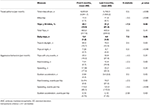

The following features, in both Group 1 car and motorcycle and Group 2 bus and lorry drivers, are considered to indicate a good prognosis for a person under care for a first unprovoked or isolated epileptic seizure: isolated seizure means one or more unprovoked seizures within a 24 hour period, or one or more unprovoked seizures within a 24 hour period where that period of seizure has occurred more than 5 years after the last unprovoked seizure.epilepsy is prescribed in legislation as a relevant disability where there have been 2 or more epileptic seizures during the previous 5 year period.from a licensing perspective, epilepsy means 2 or more unprovoked seizures over a period which exceeds 24 hours.if within a 24-hour period more than one epileptic event occurs, these are treated as a single event for the purpose of applying the epilepsy and seizure regulations.epilepsy encompasses all seizure types, including major, minor and auras.Epilepsy and seizuresĪppendix B sets out the relevant regulations. A short term medical review licence is generally issued when there is a risk of progression. When considering licensing for these customers, the functional status and risk of progression will be considered. specific neurological conditions in this chapter (Neurology).any condition of the central or peripheral nervous system presently with, or at risk of progression to a condition with, functional (sensory (including special senses), motor and/or cognitive) effects likely to impact on safe drivingįurther information relating to specific functional criteria is provided on:.
#TRANSIENT GLOBAL AMNESIA DRIVING RESTRICTION DRIVERS#
✓- May continue to drive and need not notify DVLAĬhanges to Annex III to the EC Directive 2006/126/EC require that driving licences may not be issued to, or renewed for, applicants or drivers who have a serious neurological disorder unless there is medical support from their doctors.Ī serious neurological disorder is considered as: ! - May continue to drive subject to medical advice and/or notifying DVLA Intracranial pressure monitoring device – inserted by burr hole surgery.Neuroendoscopic procedures – for example, third ventriculostomy.Intraventricular shunt or extraventricular drain – insertion or revision of upper end of shunt or drain.Surgical treatment/foramen magnum decompression.Intracranial aneurysm – truly incidental finding without haemorrhage.Malignant brain tumours – including metastatic deposits and pineal tumours.



Primary/central hypersomnias – including narcolepsy type 1 (narcolepsy with cataplexy) and type 2.Transient loss of consciousness (‘blackouts’) – or lost/altered awareness.


 0 kommentar(er)
0 kommentar(er)
